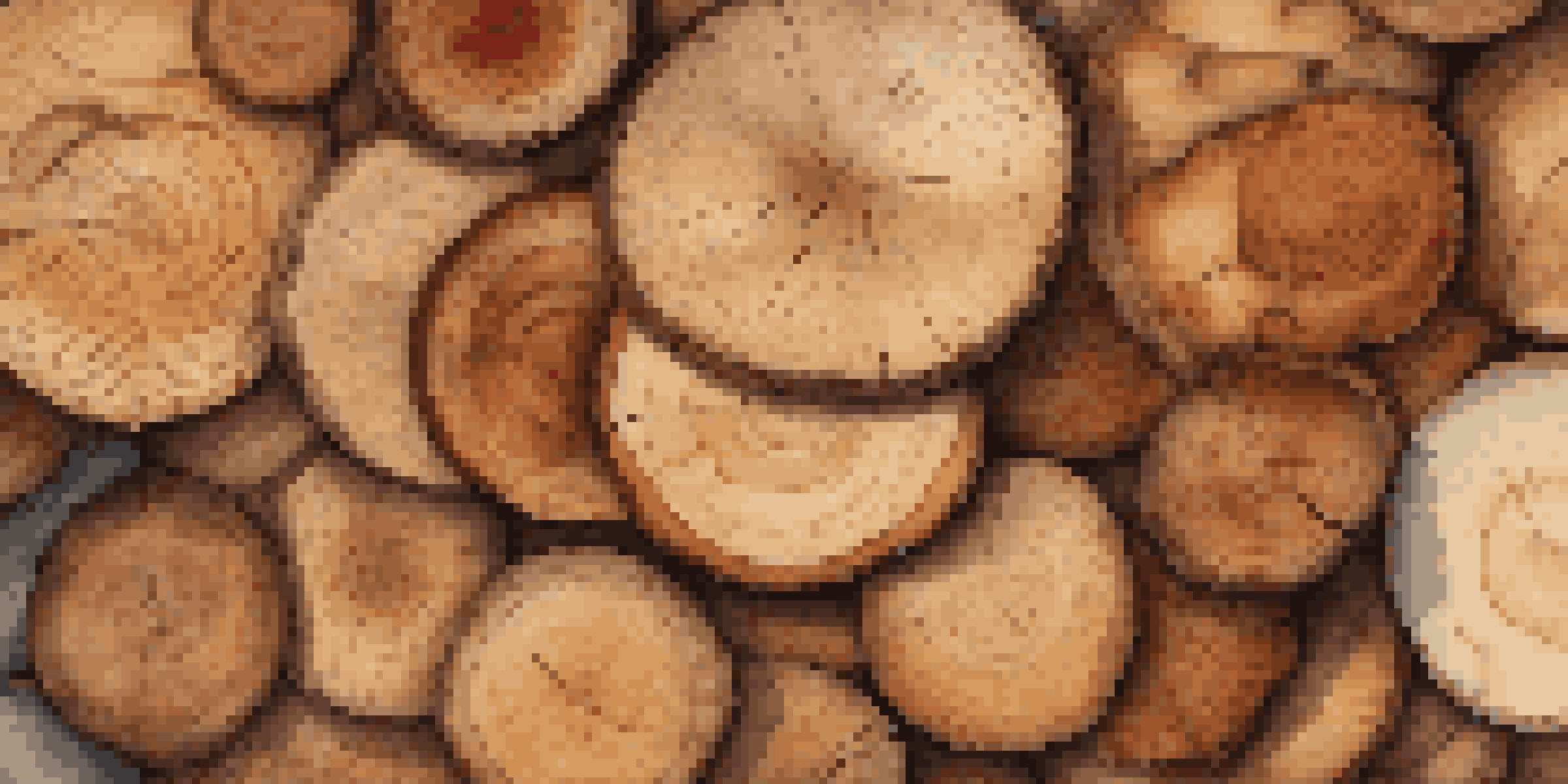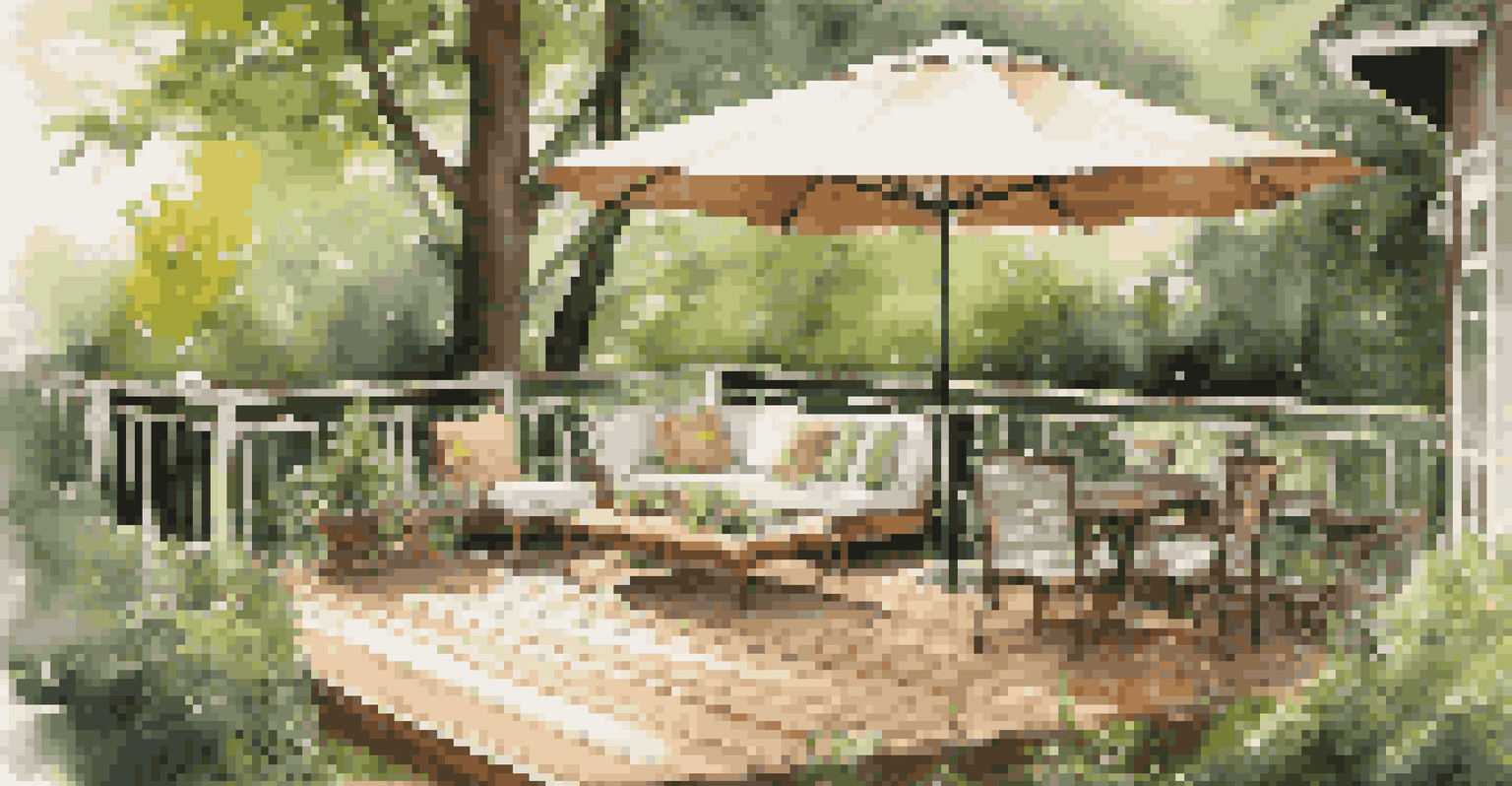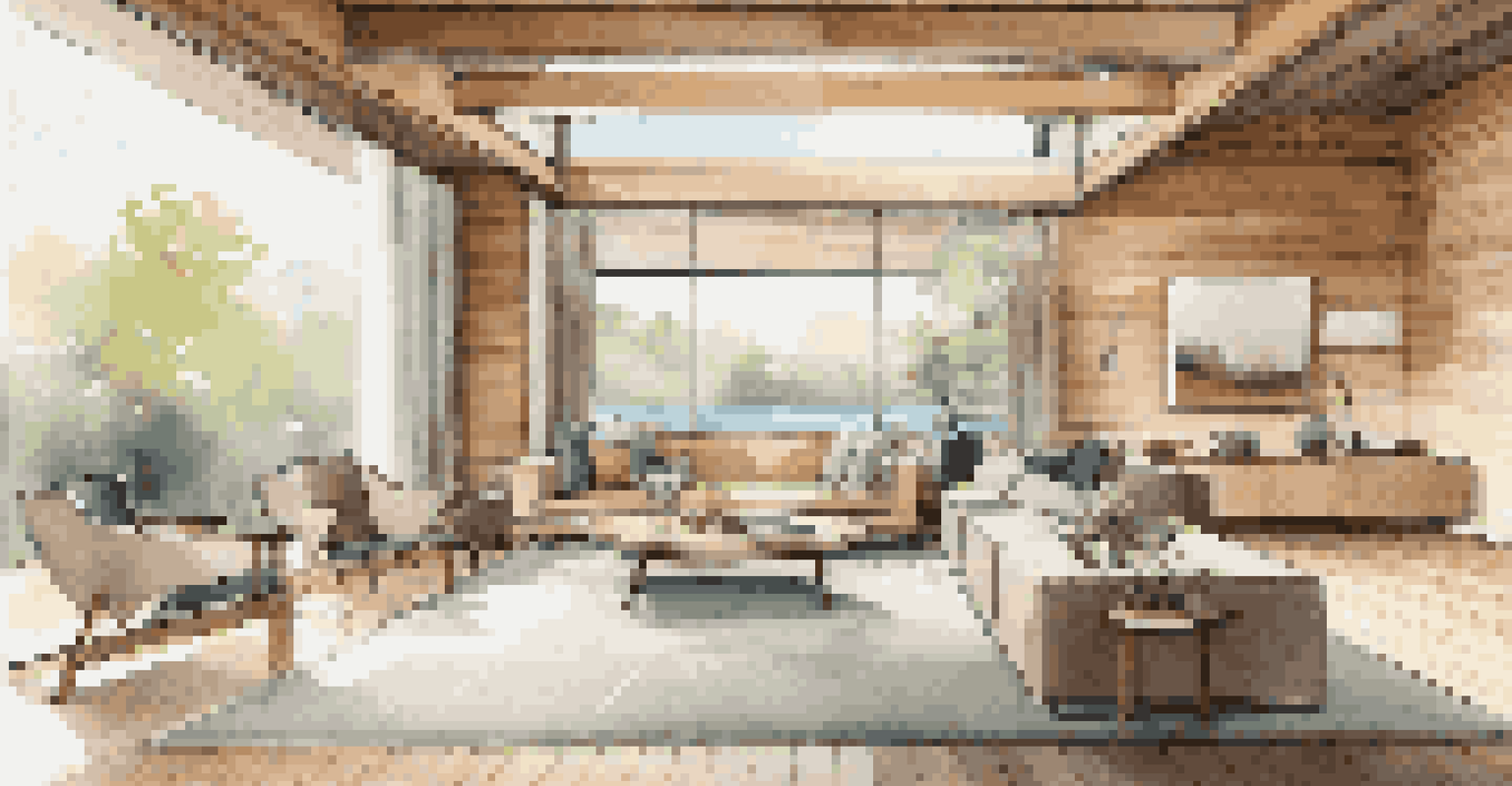The Science of Wood: Understanding Properties and Uses

What Makes Wood Unique: An Overview of Its Structure
Wood is a natural material with a unique structure that makes it both lightweight and strong. Comprised of cellulose, hemicellulose, and lignin, its composition allows for a remarkable balance of flexibility and rigidity. This structure also results in wood's ability to absorb moisture, which can affect its strength and durability. Understanding this structure is essential when considering wood for various applications, from furniture to construction.
Wood is a wonderful material. It has so many qualities that can be enhanced with good design and craftsmanship.
The cellular structure of wood consists of long fibers, which provide tensile strength. Each type of wood has a different arrangement and density of these fibers, contributing to its unique properties. For instance, oak is known for its hardness, while pine is softer and easier to work with. Knowing the characteristics of different woods helps in selecting the right type for specific uses.
Moreover, the growth rings in wood can tell us about the tree's age and the environmental conditions it faced. This is why wood is not just a building material; it’s also a historical record. By understanding the science behind wood's structure, we gain insight into how to best utilize it in our everyday lives.
Common Types of Wood: Properties and Uses
Different types of wood come with their own set of characteristics and uses. Hardwoods, such as oak, maple, and cherry, are often used in furniture and cabinetry due to their durability and aesthetic appeal. On the other hand, softwoods like cedar and pine are commonly utilized in construction and outdoor projects, offering lighter weight and ease of handling.

Each type of wood has specific properties that make it suitable for certain applications. For example, cedar is naturally resistant to decay, making it a popular choice for outdoor furniture. Meanwhile, hardwoods are often chosen for their rich colors and intricate grain patterns, which add beauty to interior spaces.
Wood's Unique Structure Explained
Wood's composition of cellulose, hemicellulose, and lignin gives it a remarkable balance of flexibility and rigidity, influencing its strength and durability.
Understanding the differences between hardwoods and softwoods allows us to make informed choices for our projects. Whether you’re building a sturdy outdoor deck or crafting an elegant dining table, selecting the right type of wood can enhance both the functionality and aesthetics of your work.
The Role of Moisture in Wood: Importance and Effects
Moisture plays a crucial role in the properties of wood, influencing its strength, durability, and overall performance. Wood is hygroscopic, meaning it can absorb and release moisture depending on the surrounding environment. This characteristic allows wood to adapt to changes in humidity, but it can also lead to issues such as warping or cracking if not properly managed.
The best time to plant a tree was twenty years ago. The second best time is now.
When wood is exposed to excessive moisture, it can swell, while low moisture levels can cause it to shrink. This fluctuation can be problematic in applications where precision is essential, such as cabinetry or flooring. Understanding how to manage moisture content is vital for ensuring the longevity and stability of wood products.
To mitigate moisture-related issues, many woodworkers use techniques like kiln drying, which reduces wood's moisture to a stable level before use. This process helps in creating products that maintain their shape and integrity over time, making it essential knowledge for anyone working with wood.
Wood Treatments: Enhancing Durability and Appearance
Wood treatments are essential for enhancing the longevity and appearance of wood products. Various treatments can protect wood from environmental factors, pests, and decay. For instance, pressure treating wood with preservatives can significantly extend its life, especially for outdoor applications like decks and fences.
Moreover, finishing techniques such as staining, painting, or sealing can enhance the natural beauty of wood while providing a protective layer. These finishes not only add color but also safeguard against moisture and UV damage. Choosing the right treatment depends on the intended use and desired aesthetic.
Moisture's Impact on Wood Properties
Moisture plays a crucial role in wood's performance, with fluctuations leading to potential issues like warping and cracking if not managed properly.
It's important to regularly maintain treated wood to ensure it remains in good condition. Reapplying finishes and checking for signs of wear can prevent costly repairs down the line. By understanding the available treatments, we can ensure our wooden projects withstand the test of time.
Sustainability in Wood Sourcing: Making Eco-Friendly Choices
Sustainability is a growing concern in wood sourcing, as the demand for timber can impact forests and ecosystems. Sustainable forestry practices aim to minimize environmental harm while meeting the needs of the market. This includes responsible harvesting methods and replanting efforts to ensure that forests continue to thrive.
When choosing wood products, look for certifications like FSC (Forest Stewardship Council) that guarantee sustainable sourcing. These certifications help consumers make informed choices that support eco-friendly practices. By opting for sustainably sourced wood, we can contribute to the health of our planet.
Furthermore, using reclaimed or salvaged wood is another excellent way to promote sustainability. This practice not only reduces waste but also adds character and history to new projects. Embracing sustainable practices in wood use helps us balance our needs with environmental stewardship.
Innovative Uses of Wood in Modern Design
Wood is not just a traditional building material; it has found innovative uses in modern design. From furniture to architectural features, wood brings warmth and texture to contemporary spaces. Designers are increasingly incorporating wood into their projects, creating stunning contrasts with metal and glass.
One exciting trend is the use of engineered wood products, which offer enhanced performance and versatility. These products, such as cross-laminated timber, allow for larger spans and unique architectural designs. This innovation makes it possible to create stunning wooden structures that were once thought impractical.
Sustainable Wood Sourcing Matters
Choosing sustainably sourced wood supports eco-friendly practices and helps protect forests while meeting consumer demands.
Moreover, wood is being used in unexpected ways, such as in wall panels, ceiling beams, and even art installations. The ability to shape and finish wood makes it a favorite among designers looking to add a touch of nature to their creations. As we explore new possibilities with wood, its role in modern design continues to evolve.
The Future of Wood: Trends in Technology and Usage
The future of wood is bright, with trends in technology and usage paving the way for exciting developments. Advancements in wood processing and treatment techniques are improving the efficiency and sustainability of wood products. For example, innovations in cross-laminated timber are making it possible to construct taller wooden buildings, challenging traditional materials like concrete and steel.
Additionally, the integration of technology in woodworking, such as CNC machines and laser cutting, is allowing for more intricate designs and precise cuts. This not only enhances the aesthetic quality but also reduces waste, making woodworking more sustainable. As technology continues to advance, the possibilities for wood applications are expanding.

Moreover, the growing emphasis on eco-friendly practices means that wood will continue to play a vital role in sustainable construction and design. As we become more aware of our environmental impact, the demand for responsibly sourced wood will only increase. The future of wood is not just about tradition; it’s about innovation and sustainability.